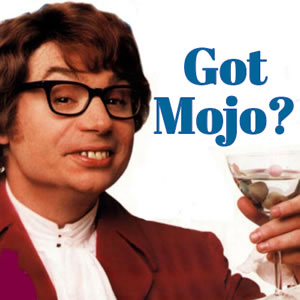I am a traveler, and like many people on this site, I write about it.
That is to say, I don’t blog about my trips, but instead have written a book, Time Zones, Containers and Three Square Meals a Day, about a few particular journeys I made while working on a container ship.
Now that my manuscript is edited and proofread, it is ready to be seen by the world, but getting it ‘out there’ is the big challenge.
As the writer of a book you have two options to get your book published:
- Find a publisher (but that is difficult and might take years) or
- Self-publish (which is a lot of work, but keeps you in control).
I chose the second option, self-publishing, for all my three books (including the last one about the container ships).
Self-publishing comes in two forms, using a traditional printer and using Print on demand (POD). To get my first two books published, I used a traditional printer.
- Pros:
- Cheaper printing prices, especially with a larger print run
- Instant stock
- Cons:
- Pay upfront for the entire print run
- Need room to stock a large amount of books.
My biggest problem with self-publishing via a traditional printer was generating enough money to pay for the entire print run. I had to borrow money, without knowing if I would ever sell the books and be able to pay back what I owed.
Therefore, when I was ready to publish my container ship book, I decided to give Print on demand a go.
- Pros:
- Not paying a large amount of money upfront
- Not being stuck with loads of unsold books in the spare bedroom
- Option of having the book sold as ebook as well
- Cons:
- Actual print costs are higher, so less profit,
- Not having instant stock, making delivery times longer
At the moment, I am still at the beginning of my experiences with POD.
I was however a bit surprised when I realized that printing one copy was going to be quite expensive. So, unless the book is sold at a much higher price, I don’t make much profit. But selling at a higher price might of course stop people from buying the book in the first place…
It’s up to you which form of self-publishing to chose, when you decide to ‘go it alone’. Keep in mind, however, that self-publishing still requires you to do your own marketing and possibly your own distribution.
It is therefore not for the fainthearted, but even so, I can recommend it.
~ Maria
Have you self-published? Share your experience!






I’ve just been going through this same analysis, and have wound up at the same place that you did – self publish is the way to go. Still trying to decide between traditional publisher and POD, though. I’m wondering if the reduced profit margin is outweighed by not having money wrapped up in inventory. I hope you’ll update this when you are a little further along in the POD process!
Hey Mary, you are asking a good question when you write if the reduced profit margin is outweighed by not having money wrapped up in inventory.
I think choosing between traditional print or POD is very personal and depends on many things. My first two books were about history and architecture and had many pictures. They had very specific local information and that made it more logical to have them printed in the traditional way. I was lucky that people were willing to lend me the money for the printing and because I did my own marketing and distribution, I had a high profit margin.
My new book is mostly text, which made it a more likely candidate for POD and ebook.
Good luck with choosing the best methode of self-publishing for you. I promise I will write an update on the POD process soon. :)
Great food for thought, Maria! I have a couple of books I’ve been working on that I hope to finish someday, but I already know how hard it is to get published these days by the traditional publishing company route, so I will likely consider self-publishing for whichever one I finish first….thanks for this article!
Hey Trisha, I’m looking forward to read your first book, whenever it comes out by whichever means! :)
You might try self-publihing with GuideGecko.com. They do both POD and ebooks, and there are no upfront charges. I’ve done all my recent Cheryl’s Guides with them, and I’m very pleased. They only do travel theme books, however, but it sounds like yours might qualify.
Hi Cheryl, GuideGecko.com sounds like a good company to go to. Thanks for mentioning them.
As an editor (moving into that realm from travel writing)I get asked that question a bunch!
This is a great post with good things to think about. Most people do not understand the difference and you have done an excellent job of laying it out.
I, too, have gone both routes and have experienced many of the pros and cons you mentioned. Sometimes it depends on your subject material, who is or how you are marketing it (or have time to do so!)and how important it is to sell a bunch or to just get the word out about your book.
There’s probably not an easy or “right” answer.
Thanks for your post!
Thank you, Wendy. You’re right that there is no easy or ‘right’ answer. As you say it depends on the subject material and time available what is the best individual solution.
Hi Maria,
Interesting post. As someone who has had a book published with a “regular” publisher and is now looking to self-publish (guidebooks), I have some other insight to add.
You mentioned borrowing money to print, but you didn’t say anything about what you lived on while you were writing. This is my biggest issue. When I went through a publisher, I had an advance which made up for the time I spent writing when I couldn’t earn money. Now, as I want to self-publish, I am faced with the fact that I can’t do it for awhile until I’ve built up enough money to make up for the lost work time.
On the other hand, my publisher (Mansion Grove House) stopped paying royalties to all writers last year so it’s been a legal mess that so far has not produced money. That wouldn’t happen if you were self-publishing.
I think Cheryl has a good idea in bringing up Guide Gecko. Amazon and Barnes and Noble now offer similar options to publish. That way you only need to worry about the money for while you are working, not the printing costs.
Good luck with your book!
Marcia
Hey Marcia, you bring up a very good point.
While I was writing my books I had a part-time job. I chose only to work so many hours that would give me enough money to live on, thus giving me as many hours of writing as I could. When I wrote my first two books, I lived with three housemates in one house. This reduced my costs and I was able to earn enough with just 16 hours of work a week.
Now, I live by myself and I need to work 24 hours a week to cover my cost. This still gives me 4 days of writing. I am lucky that my work hours are Mon-Tue-Wed, so by the time Thrusday comes around I can go into writing mode for 4 days.
Obviously it depends on your own situation how many hours of work you need.
Good luck with finding the right solution for you!
I’ve written & published guidebooks with the big companies: Dorling Kindersly, Fodors but now have my own imprint Etruria Editions and joint venture with local publishers here in Italy. This year published two books and now busy with PR, promotion, distribution. Hard work but I like to be in charge.
Your advice is excellent, first you must be a writer, then have an audience, then keep plugging away.